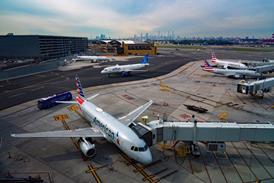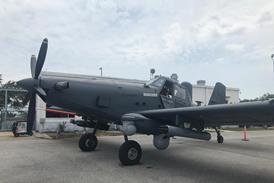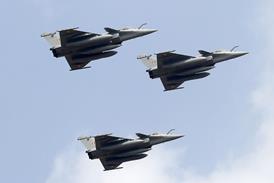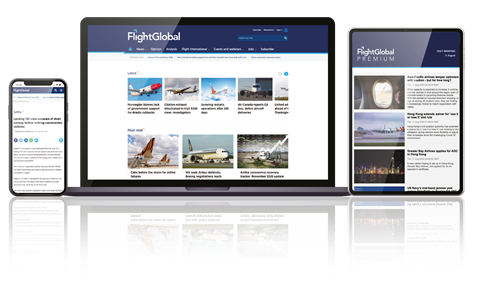US legislators are renewing the push to remove limits on where airlines can fly from Ronald Reagan Washington National airport.
Representative Blake Farenthold of Texas introduced two amendments seeking changes to the 2,012km (1,250 mile) perimeter at Washington National airport shortly after the House of Representatives transportation committee announced a multi-year Federal Aviation Administration reauthorisation bill on 2 February.
One of the amendments would remove the perimeter entirely while the other seeks to change it to 1,425 miles – a distance that would allow for nonstop flights to the legislator’s district around Corpus Christi, Texas, and nearby San Antonio.
Washington National operator the Metropolitan Washington Airports Authority is having none of it.
“[MWAA] strongly opposes proposed amendments to HR 4441… that would change the current flight limitations at Reagan National,” says John Potter, president and chief executive of the authority, in a letter to the House transportation committee leadership on 9 February.
MWAA has been dealing with a surge in passenger traffic at Washington National to about 23 million in 2015, up from about 18 million in 2010. The authority points to the reallocation of slots to non-incumbent low-cost carriers and the creation of “beyond perimeter” slots in every FAA reauthorisation bill since 2000 for the growth.
Alaska Airlines, American Airlines, Delta Air Lines, JetBlue Airways, Southwest Airlines, United Airlines and Virgin America hold the 20 beyond perimeter slot pairs, offering nonstop service to cities like Austin, Los Angeles, San Juan and Seattle Tacoma.
Fort Worth-based American, which operates a hub at Washington National with about 50% of the slots, stands to benefit the most from changes in the perimeter rule.
“As a result of previous congressional action to add slots and relax the perimeter, many air carriers have shifted flights from [Washington] Dulles International to Reagan National,” says Potter. “As a result, passengers at Reagan National are now regularly confronted with gridlock on airport roadways, parking lots filled to capacity, overcrowded hold-rooms and gate areas, security-lines backups and delays at over-stressed baggage claim areas.”
MWAA recently began a $1 billion programme designed to alleviate some of the congestion at National. Works include a new 14-gate regional concourse and expanding the secure area to include the main hall in terminal B/C, however, they are not expected to open until 2020.
Dulles, the Washington DC region’s much larger and primary international airport, has seen a drop in traffic to about 21.7 million passengers in 2015 from 23.5 million in 2010 and a resulting rise in per passenger expenses due to the lower traveller numbers.
Chicago-based United’s hub at Washington Dulles, which shrank more than 20% from 2010 to 2015 Capstats data shows, would likely be hurt most by removing the perimeter at National.
“From our perspective, one way to seriously complicate this work right out of the gate is to start fooling around with the DCA perimeter rule,” say senators Mark Warner and Tim Kaine in a joint statement on 9 January. “The Virginia delegation is united against any such proposals because they detract from robust, reliable air travel at Dulles and Reagan National Airports.”
There are plenty of opportunities for language regarding the Washington National perimeter to be taken out of – and added back to – the FAA reauthorisation bill. The House transportation committee must debate and approve it before sending it to the full House, the Senate will take up its own version of the bill and then a final conference bill must be approved by both houses of Congress.
Source: Cirium Dashboard











































